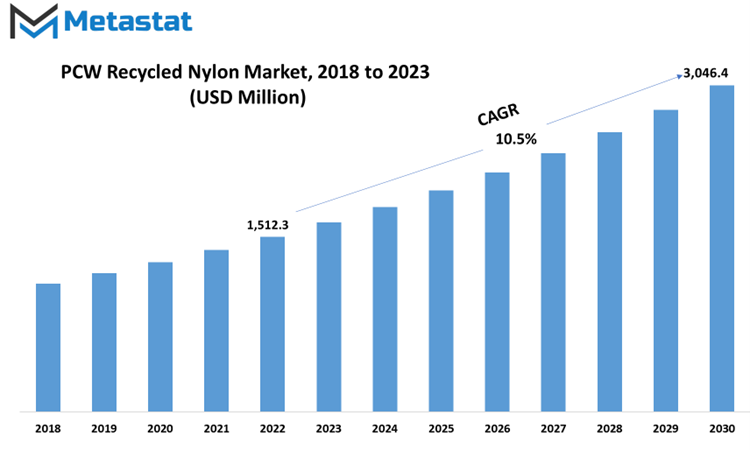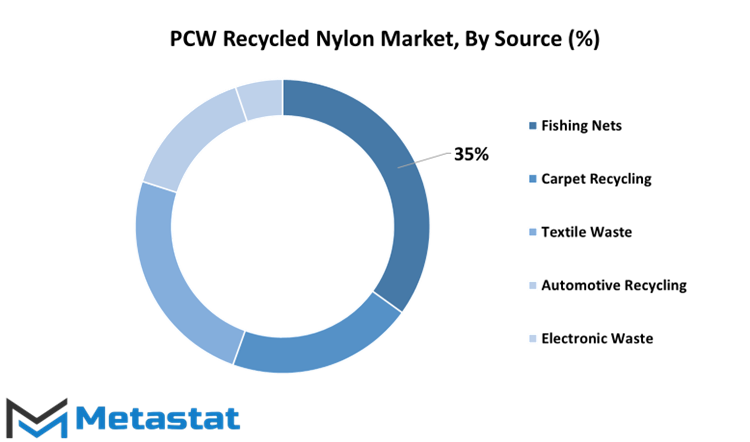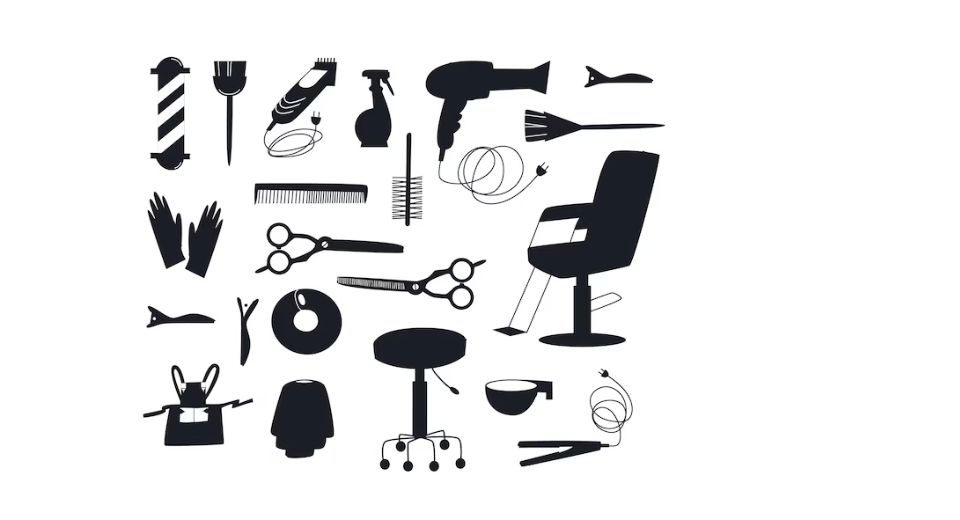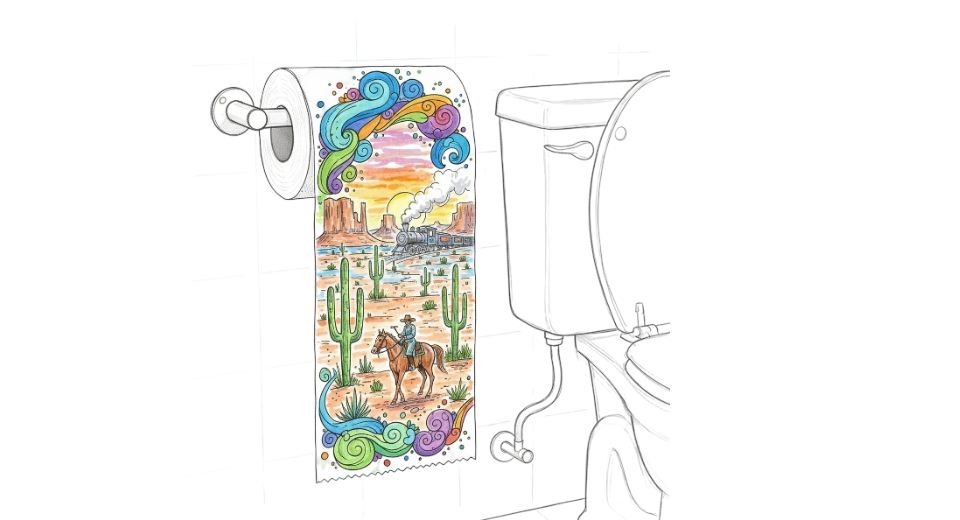MARKET OVERVIEW
The PCW Recycled Nylon Market has seen remarkable growth and attention in recent years, emerging as a pivotal component of the sustainable fashion and materials industry. PCW, or Post-Consumer Waste, recycled nylon stands as a sustainable and eco-friendly variant of conventional nylon, a synthetic polymer known for its versatility and wide-ranging applications. This innovative material is gaining prominence for its ability to mitigate the environmental impact associated with nylon production, one of the world's most used synthetic materials.
The core principle of PCW recycled nylon revolves around a fundamental concept: reusing existing materials to reduce the need for virgin nylon production. This entails collecting and repurposing discarded nylon products, including old garments, abandoned fishing nets, and industrial waste. By diverting these items from landfills and incineration facilities, PCW recycled nylon breathes new life into these otherwise discarded materials. The process of transforming post-consumer waste nylon into a viable resource involves several essential steps. Initially, the collected nylon waste is carefully sorted and cleaned to remove any impurities or contaminants. Subsequently, the nylon is shredded into smaller pieces, facilitating the melting and extrusion process. During this stage, the nylon undergoes purification, eliminating any remaining impurities and imperfections. Once the recycled nylon material is refined, it is then transformed into usable fibers or other forms, ready for various applications.
The environmental benefits of PCW recycled nylon are abundant. First and foremost, the reuse of discarded nylon products reduces the demand for virgin nylon production, which requires significant energy consumption and emits greenhouse gases. Furthermore, PCW recycled nylon conserves valuable resources and mitigates the depletion of fossil fuels, as it decreases the need for petroleum-derived raw materials that conventional nylon relies on.
One of the key areas where PCW recycled nylon has made substantial progress is within the fashion industry. Designers and brands are increasingly incorporating recycled nylon into their collections, replacing conventional nylon with a more sustainable alternative. This shift not only reduces the environmental footprint of the fashion industry but also responds to the growing consumer demand for eco-friendly products.
Moreover, PCW recycled nylon is an excellent choice for applications beyond fashion. It is widely used in the production of sports and outdoor gear, such as activewear, swimwear, and backpacks, due to its durability and resistance to wear and tear. Additionally, this sustainable material finds applications in the automotive industry, where it is used for seat covers, carpeting, and other interior components.
Global PCW Recycled Nylon market is estimated to reach $3,046.4 Million by 2030; growing at a CAGR of 10.5% from 2023 to 2030.

GROWTH FACTORS
The global PCW Recycled Nylon market is significantly influenced by a range of factors. Environmental concerns and regulatory initiatives stand out as crucial drivers, propelling the market forward. They underscore the increasing awareness of the environmental impact of nylon production and the need for sustainable alternatives.
Environmental concerns, particularly regarding the fashion industry's ecological footprint, have pushed for the adoption of recycled nylon. As consumers become more eco-conscious, the demand for sustainable products has surged. PCW Recycled Nylon, made from post-consumer waste, aligns with this growing consumer sentiment and represents a solution to mitigate the environmental impact of the fashion sector.
Regulatory initiatives further bolster the market. Governments and international bodies are introducing regulations and standards to encourage sustainability in various industries, including fashion. The implementation of such policies not only elevates the demand for PCW Recycled Nylon but also encourages companies to invest in sustainable practices.
While the prospects of the PCW Recycled Nylon market are promising, it is not without its challenges. Quality concerns pose a potential hurdle. Ensuring the quality of recycled nylon can be complex, as the material's properties may vary based on the source and recycling process. This inconsistency can be a barrier to adoption, especially in industries where high product quality is paramount.
Supply chain complexity is another factor that could impede market growth. Sourcing and processing post-consumer waste for recycling require well-organized and efficient supply chains. Delays or disruptions at any stage can hinder the availability of recycled nylon and affect market stability.
However, amidst these challenges, the fashion industry emerges as a potential savior. The fashion sector presents lucrative opportunities for the PCW Recycled Nylon market. It offers a vast consumer base and significant demand for sustainable materials. As sustainability becomes a focal point in the fashion industry, PCW Recycled Nylon has the potential to gain widespread acceptance as a preferred material.
The global PCW Recycled Nylon market finds itself at the intersection of environmental concerns, regulatory initiatives, quality challenges, and supply chain complexities. While these challenges are substantial, they are counterbalanced by the promising opportunities offered by the fashion industry. The market's trajectory will depend on its ability to address quality concerns and streamline supply chains while capitalizing on the increasing consumer demand for sustainable fashion.
MARKET SEGMENTATION
By Source
The global PCW Recycled Nylon market encompasses various sources of raw materials. These sources are pivotal in the production of recycled nylon, contributing to a sustainable and eco-friendly approach in the textile industry.
One of the significant segments in this market is Fishing Nets, which was valued at 481 USD Million in 2022. The utilization of discarded fishing nets in the production of recycled nylon not only reduces environmental waste but also provides a valuable resource for manufacturing durable and high-quality textiles. This source exemplifies the market's commitment to repurposing materials that might otherwise pollute the environment.
Another vital contributor to the PCW Recycled Nylon market is Carpet Recycling, with a value of 284.9 USD Million in 2022. Carpet recycling offers a sustainable solution to an often-overlooked environmental challenge. Rather than allowing discarded carpets to pile up in landfills, the industry leverages these materials to create recycled nylon, thus extending the lifecycle of the raw materials.
Textile Waste, valued at 340.1 USD Million in 2022, represents another significant source for PCW Recycled Nylon. This segment underscores the potential for reusing textile materials, reducing the textile industry's impact on landfills and the environment. Recycling textile waste into nylon showcases the industry's commitment to responsible and sustainable production.
The Automotive Recycling segment, which reached a value of 206.9 USD Million in 2022, highlights the importance of repurposing automotive components. End-of-life vehicle materials, which can be challenging to dispose of responsibly, find a new purpose in the PCW Recycled Nylon market. This source contributes not only to environmental sustainability but also to the reduction of waste from the automotive industry.
The Electronic Waste segment, with a value of 73.1 USD Million in 2022, demonstrates the adaptability of the PCW Recycled Nylon market. E-waste, a growing concern in our digital age, can be transformed into valuable resources for the textile industry. This innovation not only lessens the environmental impact of electronic waste but also showcases the industry's agility in responding to evolving challenges.
The Others segment, with a value of 51.6 USD Million in 2022, represents a diverse range of sources that contribute to the PCW Recycled Nylon market. These sources, often characterized by their non-uniform nature, underscore the market's inclusive approach to recycling. They showcase the capacity to transform various materials into recycled nylon, making sustainability a top priority in the textile industry.
The global PCW Recycled Nylon market thrives on the diversity of its sources. From discarded fishing nets and old carpets to textile waste, automotive recycling, electronic waste, and various other materials, this market showcases its commitment to sustainability and responsible production. By reusing and repurposing materials that would otherwise become waste, the PCW Recycled Nylon market not only contributes to environmental conservation but also highlights its adaptability to the challenges of the modern world.
By Recycling Type
The global PCW Recycled Nylon market is a multifaceted landscape, influenced by different recycling methods, each with its own unique attributes and contributions. Mechanical Recycling (MR) and Chemical Recycling (CR) stand as two distinct avenues within this market, each playing a pivotal role in the sustainable utilization of recycled nylon materials.
Mechanical Recycling (MR) takes the lead, boasting a substantial market value of 1254.1 USD Million in 2022. This recycling method involves the physical breakdown and reprocessing of post-consumer waste nylon materials. Essentially, it's about disassembling and reconstructing nylon products through mechanical means, like shredding, melting, and reforming. The attraction of MR lies in its efficiency and reduced environmental impact compared to traditional manufacturing processes. MR is an economically viable choice, as it preserves the nylon's structural integrity while reducing waste.
On the other hand, Chemical Recycling (CR), with a 2022 market value of 183.5 USD Million, presents a distinct approach. This method leverages chemical processes to break down the nylon into its core components, which can then be used to produce new nylon materials. CR stands as an innovative and eco-conscious choice, as it can handle nylon products that might not be suitable for mechanical recycling due to contamination or complex structures. This approach promotes a circular economy by reusing the chemical building blocks of nylon, thus minimizing waste.
Both Mechanical Recycling (MR) and Chemical Recycling (CR) play a crucial role in the PCW Recycled Nylon market. The former capitalizes on the practicality of mechanical processes, offering a cost-effective and sustainable way to reuse post-consumer waste nylon. Meanwhile, the latter, Chemical Recycling (CR), takes a more advanced path by breaking down nylon into its fundamental components, expanding the possibilities for recycling and minimizing the environmental impact.
The global PCW Recycled Nylon market benefits from the coexistence of Mechanical Recycling (MR) and Chemical Recycling (CR). While MR excels in efficiency and sustainability, CR brings innovation and a solution for more complex nylon products. Together, they represent a diversified approach to recycling that addresses various challenges and contributes to the sustainable management of nylon waste.

By Application
The global PCW Recycled Nylon market is a vast domain, encompassing a variety of applications. One of these significant applications is in the field of clothing. In 2022, the Clothing segment of this market was valued at 736 USD Million. This indicates the substantial demand for PCW Recycled Nylon in the fashion and apparel industry.
Another notable application of PCW Recycled Nylon is in the domain of transportation. In the same year, the Transportation segment held a value of 347.9 USD Million. This suggests a considerable usage of PCW Recycled Nylon in the automotive and transportation sector, where its properties are leveraged for various purposes.
Moreover, PCW Recycled Nylon also finds its place in the construction industry. In 2022, the Construction segment was valued at 218.7 USD Million. This indicates the adoption of PCW Recycled Nylon in construction materials and applications due to its durability and sustainability.
Apart from these prominent sectors, there are various other applications within the PCW Recycled Nylon market. The Other segment, which encompasses various miscellaneous applications, held a value of 134.9 USD Million in 2022. This further illustrates the versatility of PCW Recycled Nylon and its utilization in a range of industries beyond clothing, transportation, and construction. The global PCW Recycled Nylon market is multifaceted, with its applications extending to various sectors, including clothing, transportation, construction, and more. The market's diverse utility in these segments underscores its adaptability and the growing recognition of the benefits of recycled materials in multiple industries.
REGIONAL ANALYSIS
The global PCW Recycled Nylon market is categorized based on geography, mainly into North America, Europe, Asia, and the rest of the world. These geographical divisions play a significant role in determining the dynamics of this market. In North America, the PCW Recycled Nylon market exhibits robust growth. This growth can be attributed to the region's increased emphasis on sustainability and eco-friendly products. The demand for recycled nylon in North America is driven by both consumer awareness and regulations promoting sustainable practices.
Europe, too, is a noteworthy player in the PCW Recycled Nylon market. European countries have been at the forefront of sustainable fashion and environmentally responsible production processes. This has translated into a growing market for PCW Recycled Nylon, as consumers and manufacturers alike seek more eco-conscious alternatives.
Asia, with its vast manufacturing capabilities, is a pivotal region in the global market. The demand for recycled nylon is escalating as more Asian manufacturers recognize the need for sustainability and environmental responsibility. Additionally, the sheer volume of production in Asia means that even a modest shift towards recycled materials can have a substantial impact on the global market.
The rest of the world, which includes regions like South America and Africa, is also witnessing an increase in demand for PCW Recycled Nylon. As the global awareness of environmental concerns spreads, consumers and manufacturers in these regions are progressively turning towards sustainable materials.
The geographical division of the PCW Recycled Nylon market underscores the global nature of sustainability efforts. It shows that the drive for more responsible and eco-friendly products is not limited to a specific area but is a worldwide endeavor. Each region's unique characteristics and requirements contribute to the overall growth and evolution of the PCW Recycled Nylon market.
COMPETITIVE PLAYERS
The PCW Recycled Nylon industry is marked by a diverse array of participants, each playing a significant role in its growth and development. Among these key players, Unifi, Inc., and Hyosung TNC stand out as prominent contributors to this dynamic sector. Unifi, Inc. is a notable name in the PCW Recycled Nylon arena. This company has established itself as a leader in sustainable textile solutions. With a commitment to environmental responsibility, Unifi, Inc. has made substantial strides in the development and production of recycled nylon products. They offer a range of innovative solutions that incorporate post-consumer waste (PCW) nylon, catering to the growing demand for eco-friendly textiles.
Hyosung TNC, another influential player in the PCW Recycled Nylon industry, brings its own set of strengths and expertise. This South Korean company has a long history of producing high-performance nylon fibers. Hyosung TNC has expanded its portfolio to include recycled nylon products, responding to the increasing global emphasis on sustainability. Their extensive experience in the textile industry positions them as a key player, actively contributing to the development and availability of recycled nylon options.
Both Unifi, Inc. and Hyosung TNC contribute to the PCW Recycled Nylon industry by not only producing eco-conscious textiles but also by driving innovation and raising awareness about the importance of sustainable practices. Their presence in the industry reflects a growing acknowledgment of the need to adopt more environmentally responsible approaches in textile production. As the demand for recycled nylon continues to rise, these key players are well-positioned to make a lasting impact on the industry's future direction.
PCW Recycled Nylon Market Key Segments:
By Source
- Fishing Nets
- Carpet Recycling
- Textile Waste
- Automotive Recycling
- Electronic Waste
- Others
By Recycling Type
- Mechanical Recycling (MR)
- Chemical Recycling (CR)
By Application
- Clothing
- Transportation
- Construction
- Other
Key Global PCW Recycled Nylon Industry Players
- Unifi, Inc.
- Hyosung TNC
- Martex Fiber
- Aquafil S.p.A
- Radici Partecipazioni SpA
- NILIT Ltd.
- Toray Industries, Inc.
WHAT REPORT PROVIDES
- Full in-depth analysis of the parent Industry
- Important changes in market and its dynamics
- Segmentation details of the market
- Former, on-going, and projected market analysis in terms of volume and value
- Assessment of niche industry developments
- Market share analysis
- Key strategies of major players
- Emerging segments and regional growth potential








 US: +1 3023308252
US: +1 3023308252






